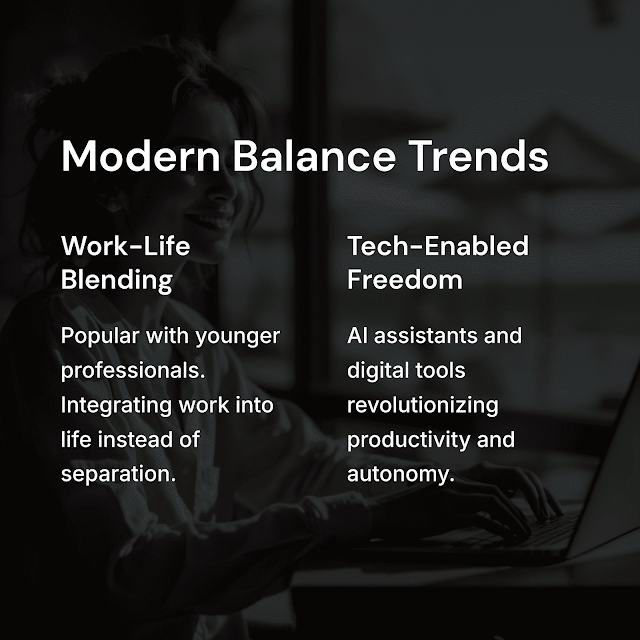Burnout. Anxiety. That sinking feeling on Sunday night. If you've ever experienced these, chances are your work-life balance is out of sync. But here's the truth: achieving balance isn’t about working less—it’s about living smarter. In this blog post, we’ll dive deep into what work-life balance truly means today, why it’s a non-negotiable survival strategy, and how to actively build a lifestyle that supports your well-being while still being career-ambitious.
What Is Work-Life Balance?
Work-life balance—commonly abbreviated as WLB or "워라밸" in Korean—is more than a catchy buzzword. It’s the conscious effort to create an equilibrium between the time and energy spent on work and that devoted to personal life. It doesn't necessarily mean reducing work hours but rather enhancing satisfaction in both domains. A true balance helps prevent burnout, supports better health, and enables you to fully show up in your personal life without compromising your career.
In recent years, new terms have emerged like Work-Life Blending and Work-Life Harmony. These approaches suggest that instead of drawing strict lines between professional and private spheres, we can find ways to harmoniously integrate them. This especially resonates with Gen Z workers who are more likely to value freedom, autonomy, and purpose in their work environments.
3 Core Habits to Practice Work-Life Balance
Building a sustainable work-life balance doesn’t happen overnight. It’s a practice—one that requires consistency, boundaries, and a shift in mindset. The following three habits form the foundation for a balanced life, and they’re easier to start than you might think.
1. Set Clear Boundaries: Your off-the-clock hours are sacred. Stop checking emails after dinner. Turn off Slack notifications on the weekends. It might feel uncomfortable at first—especially if your work culture romanticizes overworking—but in the long run, this practice recharges your mental and emotional batteries.
2. Master Time Management: Prioritize your day using techniques like time-blocking or the Eisenhower Matrix. Tackle high-impact tasks in the morning when your energy is high. Most importantly, schedule your downtime just like meetings—because relaxation is productive too.
3. Embrace Flexibility (when possible): Use flexible working options like remote days or staggered hours if your company allows it. You’d be surprised how much smoother your day feels when it’s aligned with your personal rhythm—whether you're a morning lark or a night owl.
5 Personal Strategies That Actually Work
Want to go beyond theory? Here are five down-to-earth ways real people are practicing work-life balance—even in demanding careers.
- Block out one hour every evening for a hobby—non-negotiable.
- Commit to “no screen” Sundays with family or friends.
- Take a 10-minute walk after lunch—every day, no matter how busy.
- Say “no” to meetings after 4 p.m. unless absolutely necessary.
- Journal or meditate for five minutes before bed to decompress.
Modern Trends in Work-Life Balance
Work-life balance isn’t a static concept—it evolves with time, technology, and society. In 2025, two major trends are shaping how we approach balance: blending and tech-enabled freedom.
Work-Life Blending is becoming especially popular among younger professionals. It’s about integrating work into life instead of rigidly separating them. Think answering emails from a beach café or joining Zoom calls during travel. While this approach offers freedom, it requires personal discipline to prevent overwork.
Digital Tools and AI are also revolutionizing productivity. AI assistants, smart calendars, noise-canceling devices, and virtual office platforms all help reduce friction and enhance autonomy. These tools make remote work smoother and help people carve out more intentional personal time.
Workplace Policies That Promote Balance
Forward-thinking companies understand that burnout hurts everyone—employees, managers, and the bottom line. That’s why more employers are investing in flexible work policies and mental wellness programs. Some common initiatives include:
- Remote or hybrid work arrangements
- Mental health days or no-meeting Fridays
- Access to mindfulness apps and counseling services
- Flexible vacation and parental leave policies
Emotional Health and Self-Awareness
Let’s not forget: balance isn’t only about schedules—it’s emotional too. Learning to regulate emotions, set healthy expectations, and maintain a growth mindset is fundamental. You need to recognize when you’re close to burnout before it becomes a crisis.
- Journaling your emotions helps identify stress patterns.
- Therapy isn’t just for crises—it’s for self-growth too.
- Reflecting on your values and goals keeps your life aligned.
Frequently Asked Questions (FAQ)
Start with small steps: designate one hour in the evening for yourself, turn off work notifications after hours, and reflect on your values weekly.
It depends. Remote work offers flexibility, but boundaries and self-discipline are essential. Some people thrive in hybrid settings instead.
Start by protecting your personal time and communicating your needs. Explore internal resources or consider roles with better alignment if necessary.
Absolutely. Engaging in creative or active hobbies resets your brain and gives a sense of purpose beyond the paycheck.
No. Guilt is a sign of internalized hustle culture. Rest is not a reward—it’s a right. Boundaries protect your energy, not your laziness.
Try a tech-free morning routine. Wake up without your phone, stretch, and journal for five minutes. It sets the tone for a balanced day.
Work-life balance isn't just a trend—it's a survival skill in our hyperconnected world. If there's one thing you take away from this post, let it be this: You deserve time for yourself, space to breathe, and permission to say "no." Don’t wait for burnout to make the change. Start with one small step today—then another tomorrow. Balance is built, not found.
Related Resources
- Forbes: Work-Life Balance Strategies That Actually Work
- Harvard Business Review: What Work-Life Balance Looks Like Now
- YouTube: The Myth of Work-Life Balance by Nigel Marsh
- The Muse: Define Work-Life Balance for Yourself









Post a Comment